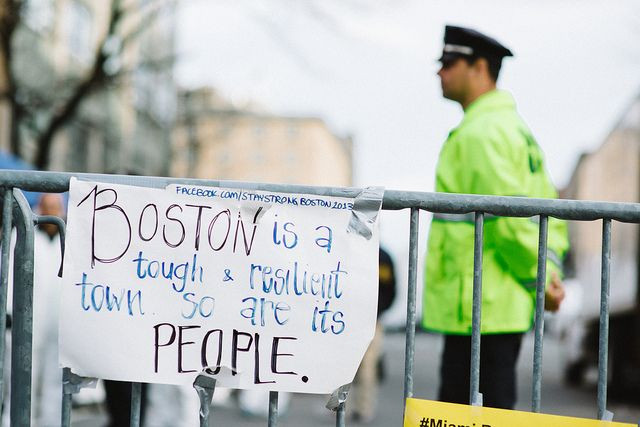PTSD Symptoms After Boston Bombing Predicted By Prior Reactions To Emotional Images

More than one year after the Boston Marathon bombing, new research is finding people may be exhibiting symptoms of post-traumatic stress disorder (PTSD), and that, importantly, these symptoms may have been predicted years prior during unrelated experiments into the brain’s fear response.
Collaboration from University of Washington and Harvard researchers finds in a new study that when our brains process emotional images, the part of the organ responsible for fear — the amygdala — lights up in particular ways. These depend on our prior experiences, which we recall from memory, and to a lesser extent our genetic predispositions. Using a unique data set, the research team was able to predict which teenagers would exhibit PTSD symptoms based on prior amygdala readings.
Katie McLaughlin, now an assistant professor of psychology at UW, had already conducted brain scans a year before the bombings when the tragedy occurred. She showed subjects a series of neutral and emotional images designed to elicit either a negative response or a non-response. These included pictures of chairs or buttons, or people fighting or crying.
One month after the incident, McLaughlin and her colleagues revisited the pool of subjects and sent them an online survey. They wanted to know how close subjects were to the finish line when the bomb detonated, whether they were injured, how much media exposure they experienced, and whether they struggled to forget the bombing. Then, the team compared the responses to their amygdala readings a year ago to see whose brains stuck to the story.
What they found was the more subjects’ amygdala responded to negative images, “the more likely they were to have symptoms of PTSD following the terrorist attacks,” McLaughlin said in a statement. The people who, two years ago, demonstrated more sensitive responses in the fear centers of their brain later went on to show greater risk of PTSD. A simple online survey is by no means a diagnosis; however, the model the researchers created stays consistent with the prior findings.
McLaughlin argues the study is especially valuable because it includes data from the same people before and after a tragic event. Obtaining data from before such an incident is typically impossible, as the events strike at random. All researchers can do is hope the data from an unrelated experiment is still available for follow-up analysis. Now that McLaughlin and her team have this follow-up data, she hopes it can inform diagnostic efforts.
“The more we understand the underlying neurobiological systems that shape reactions to traumatic events, the closer we move to understanding a person’s increased vulnerability to them,” she said. “That could help us develop early interventions to help people who might develop PTSD later.”
According to the National Institutes for Mental Health, 3.5 percent of the U.S. population reportedly suffered from PTSD in the year 2005. Of those cases, over a third were diagnosed as “severe.” All told, just under seven percent of people reported experiencing PTSD at some point in their lives, although only around half will receive treatment for the disorder.
Source: McLaughlin K, Busso D, Duys A, et al. AMYGDALA RESPONSE TO NEGATIVE STIMULI PREDICTS PTSD SYMPTOM ONSET FOLLOWING A TERRORIST ATTACK. Depression and Anxiety. 2014.



























